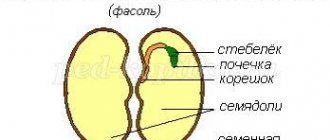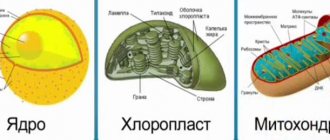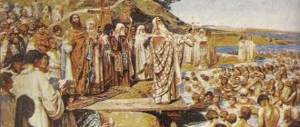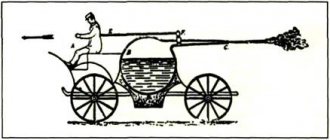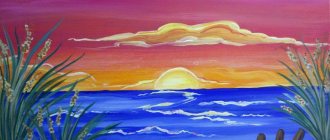Lichens
Lichens
─ this is a group of symbiotic organisms.
What does it mean
?
Translated from Greek (Simb and
os) συμ-βίωσις - “living together.”
What’s unusual about this plant organism is that the body of the lichen— the thallus
—consists of fungi and microscopic algae. Their life together was closely intertwined and became one.
The thallus consists of many intertwined fungal threads ( hyphae
). Between them, single-celled green algae are located in groups or singly. The hyphae of the fungus are tightly entwined with algae. And in some places, hyphae grow inside the algae cell.
Lichens are able to absorb water both from the substrate (that is, from their habitat) and from the air with their entire body, they are photophilous, undemanding to the substrate, and sensitive to air pollution.
Both the fungus and the alga benefit from living together.
The fungus receives nutrients from the algae, mainly glucose produced by the algae as a result of photosynthesis, as well as nitrogen-containing substances. And the algae receives water and minerals from the fungus. The fungus also creates a favorable microclimate for algae. It protects it from drying out, covering it from the ultraviolet radiation of the sun. Ensures life on acidic substrates and mitigates the effects of a number of other unfavorable factors.
If you separate an algae from a mushroom, then it can easily exist without the mushroom, but a mushroom cannot exist without the algae.
Lichens are quite diverse. Their bodies are colored in different colors depending on what pigments they contain: from white to bright yellow, brown, orange, green, blue, gray, black.
Crustose lichens are distinguished by their appearance
,
leafy
and
bushy
.
body ,
or crustaceous, lichens are a crust (“scale”), its lower surface tightly fuses with the substrate and does not separate without significant damage.
The scale lichen includes the lichen - bacidium
. Its body is usually reddish-brown in color. It is found in the forest zone, in the south in the mountains, often in steppes and semi-deserts, but also enters the Arctic.
Crustose lichens can live on rocks, steep mountain slopes, trees, and even concrete walls.
Leafy
lichens look like plates of different shapes and colors; they are more or less tightly attached to the substrate with the help of outgrowths of the lower cortical layer.
Foliaceous lichens grow on rocks and tree bark. xanthoria wallis is especially common.
.
Parmelia foliose lichen
has medicinal properties. This lichen is widely used in folk medicine by steppe inhabitants.
Parmelia decoction has an antiseptic, bactericidal, wound-healing and hemostatic effect.
Bodies of fruticose lichens
form many round or flat branches. Thallus of this form are characterized by apical growth. In them, algae can make maximum use of light. Such lichens can grow both on the ground and hang from trees and rocks.
An interesting representative of fruticose lichens is the bearded lichen .
His body, like a beard, hangs from old branches all the way to the ground, usually in a dark spruce forest.
Bushy lichens also include moss (reindeer moss)
, which reindeer feed on. It is widespread in the tundra. Like other lichens, moss grows very slowly ─ 3–5 mm per year. It can take several decades for a pasture to recover after deer grazing.
The lifespan of all lichens is from 50 to 100 years. And the age of some, for example rhizocarpon
geographically, can reach more than 4000 years.
Lichens are quite unpretentious organisms. This allows them to settle on bare, barren rocks and stones, on the roofs of houses and other places where life would seem impossible.
Having no roots, they are quite firmly attached to the substrate with special root-like outgrowths located on the underside of the thallus. However, unlike the roots of higher plants, they serve only for attachment.
In deserts and semi-deserts there are lichens that have the shape of balls (for example, aspicillium
), they are easily transported by the wind over long distances, which is why they are often called nomadic.
There is a legend about how, in a barren desert, people, exhausted by hunger and a difficult transition, met on the ground a mass of small dry grains, similar to semolina. Having been saturated with these grains, they gained strength that helped them finish the difficult journey.
It is believed that the grains described in the legend are edible aspicillia,
or lichen manna.
This is where the expression “manna from heaven” comes from.
Lichens are very sensitive to air pollution. In the presence of fumes and poisonous gases, they quickly die. The cleanliness of the air is determined by the condition of lichens (especially in cities).
When the atmosphere is polluted, first the bushy, then the leafy, and then the crustose lichens die out. Study the lichens that grow in your area and draw a conclusion about the cleanliness of the air.
However, lichens calmly survive unfavorable climatic conditions. They are so hardy that they grow even where there is no other vegetation, such as the Arctic and Antarctic. Living organisms here have to live at very low temperatures. Precipitation always falls in the form of snow, and lichen cannot absorb water in this form.
But the black color of the thallus helps him out. The dark surface of the lichen body, due to high solar radiation, quickly heats up even at low temperatures. Snow, falling on the heated thallus, melts. The lichen immediately absorbs the moisture that appears, providing itself with the water it needs for respiration and photosynthesis.
In the heat, lichens dry out so much that they seem completely lifeless. But after the rain they quickly come to life again. With the entire surface of their body they absorb moisture from rain and fog.
Lichens, like any other living organisms, reproduce. Their reproduction occurs mainly by pieces of the thallus
.
As well as special groups of fungal and algae cells. Groups of cells
are formed inside the body of the lichen, which then ruptures under pressure, and the cells are carried away by wind and rain streams.
In nature, lichens play an important role, being the first to settle in the most barren places. By releasing special acids, they slowly destroy rocks.
The dust and grains of sand that accumulate on them create a thin layer of soil in which mosses and other land plants can take hold. Mosses and grasses, growing, shade the ground lichens, cover them with dead parts of their bodies, and the lichens disappear over time from this place.
There are almost no poisonous species among lichens. Therefore, their practical significance is quite great. Many types of lichens are used in medicine due to their high content of
a new acid that can kill viruses and bacteria. Due to these properties, lichens are used in cosmetics, dentistry and other fields of medicine.
Icelandic lichen preparations
have antibacterial properties. They are used in the treatment of infected wounds and burns. Decoctions are prepared from this lichen to treat colds and diarrhea.
Lichens also provide food and shelter for many small organisms.
Lesson on the topic “Lichens”
State Educational Institution "SUKHAREVSKAYA SECONDARY SCHOOL"
| Lesson-trip “Lichens” |
| Prepared by biology teacher Elena Viktorovna Kislova |
Lesson topic: “Lichens.” 7th grade
The purpose of the lesson:
study the structural features and vital functions of lichens as symbiotic organisms; their ecological and practical significance.
Lesson objectives:
Educational:
characterize organisms that have reached a high level of coexistence - lichens, show their diversity, position in the system of the organic world, as well as their significance in nature and human life.
Developmental:
develop the ability to compare, generalize, analyze, work with natural objects, as well as instill practical skills in recognizing and identifying types of lichens; develop memory, enrich students' vocabulary.
Educational:
to cultivate a sense of respect for nature, for one’s native land, to improve the skills of working together in a team, to collaborate, and to independently find information.
Lesson type:
learning new knowledge
Methods:
verbal (teacher's story, working with a textbook), practical (completing workshop assignments).
Lesson format:
lesson-travel.
Equipment:
a collection of different types of lichens, a table “Lichens”, a slide presentation and handouts.
DURING THE CLASSES
I.Organizational moment
(SLIDE 1) Teacher:
Hello guys, sit down. Look at each other, smile. I want to start our lesson on such a positive note.
(SLIDE 2)
(video sketch of northern nature).
Appendix 1
I read the poem:
Loving nature with a tender passion, Living life serenely, In knowledge, opening the door, Believe in biology! She will tell you guys about fish, algae, mosses, and plants and mushrooms. And one day you will learn the distance of unknown roads, and quench your thirst for knowledge. So, let's start the lesson soon!
(SLIDE 3)
The epigraph to our lesson is the words of
Charles Darwin: “The more we understand the laws of nature, the more incredible miracles become for us.”
II . Updating knowledge
(SLIDE 4)
Today in the lesson we will take a fabulous journey and get acquainted with a representative of the kingdom of mushrooms, and which representative you will recognize if you guess the crossword puzzle correctly. Questions:
- Gymnosperm plant from the symbols of the New Year.
- The close cohabitation of two living organisms is beneficial to both one and the other.
- Organisms that feed on organic matter from other living organisms.
- Thin white threads forming the body of the mushroom.
- What is the name of the body of lower plants?
- Lower plants that live mainly in water.
(SLIDE 5)
Guys, which representatives are we going to talk about today?
(children's answers) Well done! We wrote down the date and topic of the lesson: “Lichens.” (SLIDE 6)
So, you and I are going on an exciting journey on a supersonic airliner. Is everyone ready? (children's answers)
Teacher:
Get ready for the launch of a supersonic airliner!
Students:
Eat, get ready!
Teacher:
Start the engines!
Appendix 2 (music sounds)
Students:
Yes, start the engines!
III. Studying new material
So, let's go! Dear passengers, we are departing from the airport of the State Educational Institution “Sukharevskaya Secondary School”, in a few seconds we will land at the first airport (SLIDE 7)
"Legend". Here you will learn about the legend of lichens, listen very carefully. There is a legend about how once upon a time, for many days and nights, the ancient Jewish people walked through the desert, knee-deep, drowning in shifting sand. All the supplies we took with us were eaten. People fell from exhaustion and exhaustion onto the hot sand and were already preparing for death. In the morning, when the sun began to heat up the desert, the wind suddenly rose. And suddenly the travelers noticed gray lumps rolling along the sand, driven by the wind. The wind lifted them upward, and it seemed that they were falling from the sky.
(SLIDE 
- Manna, manna! Manna is falling from the sky! Everyone rushed to collect this “manna”: they took gray lumps, ate them dry, cooked porridge and baked flat cakes.
(SLIDE 9)
In 1772, the Russian botanist Pallas proved that it was a lichen. And he named this lichen lichen esculentus - edible lichen. It is very hardy and does not die even when the heat in the desert reaches 70°C. The lichen can dry out, and then again, absorbing moisture from the air, continue its life. They appeared on Earth more than 100 million years ago. Today there are 26 thousand species.
Guys, did you like the legend?
- Do you think lichens are edible or inedible?
- Which Russian botanist proved that lichen is edible?
- How many species of lichens are there today?
Well done, you listened carefully to the legend.
So, you and I are taking off from the “Legend” airport and heading to the “Lichen” airport. While we are in flight, I would like to ask, do you know the name of the science that studies lichens? (children's answers). In the last lesson, I asked you to find in the dictionary the science that deals with the study of lichens. (Students' answers)
(SLIDE 10)
Lichenology (from the Greek word leichen - meaning lichen, lichen) is the science of lichens.
Let's write this definition down in your notebook.
(SLIDE 11)
Dear passengers, we are landing at Lichenik airport.
Here we will get acquainted with the structure of lichens. I suggest you watch the video “Structure of lichens” (SLIDE 12) Appendix 3
(SLIDE 13)
Let's take a closer look at the structure of lichens. In most lichens, the thallus has upper and lower cortical layers made of a dense plexus of fungal threads, between which there is a core - a loose layer of fungal threads with algae. Lichens combine two components: autotrophic - algae and heterotrophic - fungus. Together they form a single whole. Each type of lichen is characterized by a constant form of symbiosis that has developed during the development process.
Guys, what is symbiosis? (Symbiosis (from the Greek “symbiosis” - “living together”) is the interaction of two or more different organisms, from which everyone benefits). Well done. This means that this is a mutually beneficial cohabitation of a certain mushroom with a specific algae.
Let us formulate the concept, so what are lichens?
(SLIDE 14) (
Children's answers) - Lichens are complex organisms that consist of fungal hyphae and unicellular algae that are in symbiotic relationships with each other.
(Write the definition in a notebook) (SLIDE 15)
In your reference notes, find the drawing under No. 1.
Appendix 4 .
Now let's review and sign. What are the names of the cells depicted in green (algae cells), and the weaves that encircle the algae are (children's answers) fungal hyphae. (Children sign the drawing)
(SLIDE 16) Now I propose to guess the puzzle, which encrypts the distinctive feature of lichens. Appendix 5 .
What is the main feature, let's write it down in a notebook. Feature: they live on precipitation. Lichens absorb water over the entire surface of the body, mainly from precipitation (rain, hail, snow, dew, frost); the humidity of the thallus is variable and depends on the humidity of the environment.
(SLIDE 17)
Dear passengers, our journey at the lichen airport is over, we are flying to the Research airport, where we have to find out what types of lichen thalli are distinguished. Your task is to fill out the table using the textbook on page 66, where you should note: – types of lichen thalli; - and the features of their structure, I give you 3 minutes to fill out the table.
Appendix 4 (SLIDE 18)
CARD No. 2
Checking the completion of the table. (SLIDE from 19-22).
Guys, where do lichens live? (SLIDE 23)
Now let's work with the herbarium, your task is to determine the lichen thallus. Under No. 1,2,3. Well done! (SLIDE 24) Appendix 6
(SLIDE 25)
Attention! Attention! All passengers should prepare for departure from Research Airport. During the route, we will perform physical education.
Physical education minute
One - rise, stretch, Two - bend down, straighten up, Three - clap your hands, three claps, Three nods with your head. Four - arms wider, Five - wave your arms, Six - sit quietly in your place
(SLIDE 26)
We are received by the “Significant” airport. Here we will listen to a message about the importance of lichens in nature and human life and at the same time draw up a diagram.
(SLIDE 27)
1. The importance of lichens in human life is great. Firstly, these are the most important food plants. Lichens, namely moss or reindeer moss, also Icelandic moss, serve as the main food for reindeer, which play a large role in the life of the peoples of the Far North. In total, deer use up to 50 species of lichens for food, which make up 2/3 of the total amount of food they consume on pastures. Deer eat lichens equally readily in winter and summer. But if in summer various herbs, polar birch and willow leaves, as well as berries and mushrooms serve as equally important food for them, then in winter lichens are almost the only source of food for these animals. Deer dig lichens out from under the snow, and when the snow cover is too deep, they bite off lichens growing on rocks, on tree trunks and branches, especially hanging bushy lichens. Lichens serve as food not only for domestic reindeer, but also for wild ungulates - deer, musk deer, roe deer, and elk.
2. Humans use lichens for food. For example, in Japan, one of the delicacies is the foliose lichen edible umbilicaria
.
3. Another area of practical application of lichens is medicine. The first information about the use of lichens as medicinal plants dates back to ancient times. Even the ancient Egyptians 2000 BC. e. used them for medicinal purposes. Icelandic moss tea is effective for coughs, gastrointestinal diseases, loss of appetite and even in the treatment of tuberculosis.
4. Lichens are also widely used as raw materials for the perfume industry. In ancient times in Egypt and later, in the 15th-18th centuries, powders were obtained from dry lichens, which were then used to make powders, in particular powders for wigs. Currently, extracts of these lichens are used in perfumery.
5. Since ancient times, lichens have served as raw materials for the production of dyes. These dyes were used to dye wool and silk. The main color of dyes obtained from lichen substances is dark blue. But the addition of acetic acid produces purple, red and yellow tones.
6. Lichens are also indicators of air and environmental pollution.
(SLIDE 28)
And now we are flying from the “Significant” airport to the “Ecology” airport. Here we are met by a botanist, and we will listen to a message on the topic: “Lichens are indicators of the environment”
Message.
Lichens are indicators of the state of the environment.
They are very sensitive to cleanliness. If the air is poisoned by factories and factories with car exhaust fumes, lichens cannot live and develop normally. In the smoke, burning and soot they get sick and die. The first to leave cities are fruticose lichens, then foliose lichens, then crustose lichens.
Usnea and parmelia
are very afraid of pollution (SLIDE 29) But (SLIDE 30)
xanthoria tolerates air pollution quite steadfastly.
Lichens turned out to be an accurate “device” for determining air purity. Due to the unique properties of lichens, they began to be used for a general assessment of the degree of atmospheric air pollution. On this basis, a special direction of indicator ecology began to develop - lichen indication. (SLIDE 31)
You and I must protect our nature for ourselves and for our descendants.
(SLIDE 32)
Airport “Testing”, I suggest you perform the “Lichens” test.
Appendix 7.
(SLIDE 33)
Let's do a self-test.
And now we will find out what types of lichens grow in the Mogilev region. (SLIDE 34)
Student message
.
Parmelia furrowata grows in the Mogilev region. Leafy, rather tightly attached to the substrate, with wide and narrow flat, sometimes raised, matte or shiny, smooth or wrinkled, differently colored lobes on top. Flavoparmelia. The upper surface is yellow-green. Blades 3-8 mm.
The undersurface is black with a brown edge.
EVERNIA plum. The thallus is bushy, grayish and yellowish-green or pale straw-colored. With soft, angular-rounded or flat, ribbon-like, branching lobes. They grow on trees, soil, rotten wood. Xanthoria wall, or wall-mounted. Lichen in the form of orange-yellow rosettes consisting of large, wide lobes rounded at the edge. Can be found on fences and walls of buildings. Cladonia forked - lichen grows in open places, in light forests
on soil among mosses, in swamps.
Reindeer moss, or reindeer moss, is a group of lichens
of the genus
Cladonia.
Grows in both cold and warm climates, in well-drained, open environments.
has extremely high frost resistance. It grows very slowly: 3-5 mm per year. Good food for reindeer
It can take several decades for a pasture to recover after reindeer grazing. In Norway, moss is used as feed for cows, pigs and sheep. It is collected after rain, as it is very brittle when dry. When dried, raw materials can be stored for a very long time and are not spoiled. For cows, dried reindeer moss is moistened with salted water and added to the hay. Or they brew it with boiling water and give it to cattle and pigs. The nutritional value of moss is very high. 1 quintal of moss replaces 3 quintals of potatoes.
And you and I set off on a flight, the final stop of the State Educational Institution “Sukharevskaya Secondary School”.
IV . Consolidation of the studied material
Guys, what new have you learned? What is the name of the science that studies lichens?
There are signal cards on your tables, I will read the statement to you, if it is true, then raise the red one, if it is false, then raise the blue one.
- The vegetative body of a lichen is represented by a thallus or thallus (red)
- There are 2 main types of lichen thalli (blue)
- The simplest type of lichen is fruticose (blue)
- Autotrophic component of lichen - fungus (blue)
- Lichens are very sensitive to air purity (red)
(SLIDE 35) Game “Mysterious Terms”
– tsibgarni (mycelium); – nightingale (algae); – eleg (moss moss); – yarpilema (parmelia); – ishilkanai (lichen) – tyvilsoeta (leafy) – kanipyne (scale) – setuskite (bushy).
V. _ Summarizing.
Lichens are an integral part of northern nature, valuable, irreplaceable, useful and beautiful. And while colorful lichens will delight our eyes in the hills, we can calmly breathe clean, fresh air.
VI . Reflection(SLIDE 36)
"6 hats"
VII. Homework (SLIDE 37)
Page 65-68, read and answer questions. Creative task: come up with a poem about lichens or make a crossword puzzle.
Marks for the lesson: 1) testing; 2) speaking. Guys, you did great today, you did a good job in the lesson, it was a pleasure to fly with you. Our journey has come to an end. (SLIDE 38)
Thanks everyone for your attention.
